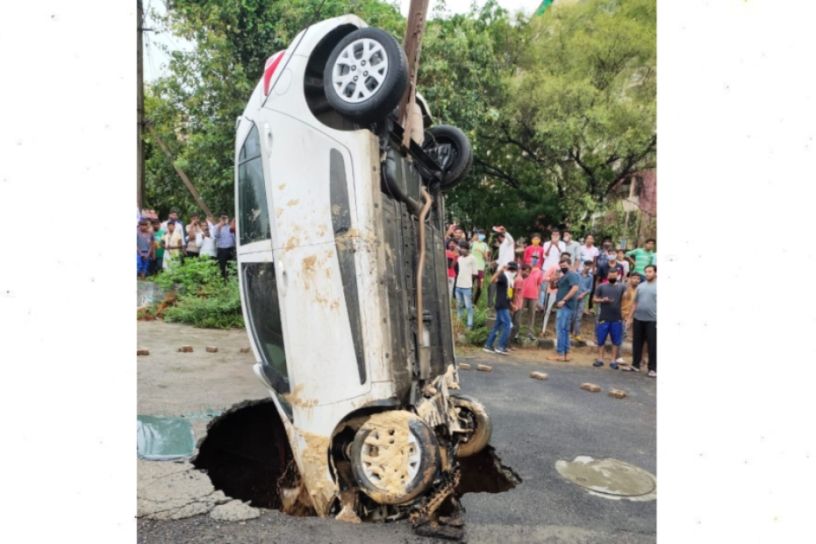Here’s What Really Caused The Sinkhole In Delhi That Swallowed This Hyundai Grand i10 Hatchback
Modified On Jul 21, 2021 11:40 AM By CarDekho
- Write a comment
This is the second such incident in the country in recent times where a car got submerged by a sinkhole following heavy rain

A policeman came away shocked but unhurt after his Hyundai Grand i10 was swallowed by a sinkhole that appeared in the middle of a road in Delhi. The car-sized sinkhole was caused by heavy rainfall on the first day of the monsoon when the city received 70mm of rainfall. Last month a similar incident had happened in Mumbai, when a Hyundai Venue SUV fell into a poorly covered well inside a residential parking lot. On that occasion, though, there weren’t any occupants inside the car.
In the latest incident, which happened in the Dwarka area of Delhi, the car did have an occupant though he managed to escape without injuries by breaking through the rear windshield. The car itself suffered some bodywork damage and a detached front bumper. Although we can’t tell from the pictures, the water and mud may have caused extensive damage to the electrical systems. Fortunately, the car will be covered under insurance since it was retrieved and isn’t a total loss. Make sure to secure yourself financially from such natural and man-made disasters by buying a comprehensive car insurance policy. You can get a policy online from InsuranceDekho in just 5 minutes.

Some reports attribute the sinkhole to a sewage line that runs underneath the road in Dwarka Sector-18. Nearby, the larger Palam drain is open and could have overflowed, and rushing water and debris could have softened the soil to the extent that it couldn’t even bear the weight of the asphalt road overhead.
Experts say that sinkholes are formed when long dry periods (Delhi summers, for instance) are followed by heavy rainfall. Hot and dry summers dry up the soil, so it develops empty pockets that you can’t see from above the ground. Once it rains, the weakened soil collapses under the weight of the water. In this case, it’s possible that this road was waterlogged for several hours. Groundwater depletion from residential borewells only adds to the existing problem.

Contrary to the sudden nature of their formation, you can predict sinkholes to some extent, at least in your own neighbourhood. Watch out for trees that, over time, seem to lean on one side. Slight depressions or new cracks in otherwise straight roads could also become sinkholes in the future. Bring such changes to the notice of the local civic body to avoid catastrophes. Be vigilant while driving after the rains, and be ready to get out quickly if your car does get stuck in a sinkhole.
-
These Sisters From Orissa Could Change Car EV Battery Tech Forever
-
Will You Drive A Hyundai Kona EV That's Powered By Human Waste?
Fortunately, this incident didn’t result in casualties. With global warming changing weather patterns, sinkholes could become more common over the next few years. This calls for better infrastructure and construction practices that take the groundwater levels and soil density into account. You can help by avoiding borewell usage as much as possible and by being alert about minor changes to the topography of your local area.
Read More on : Grand i10 Nios AMT
1 out of 1 found this helpful















